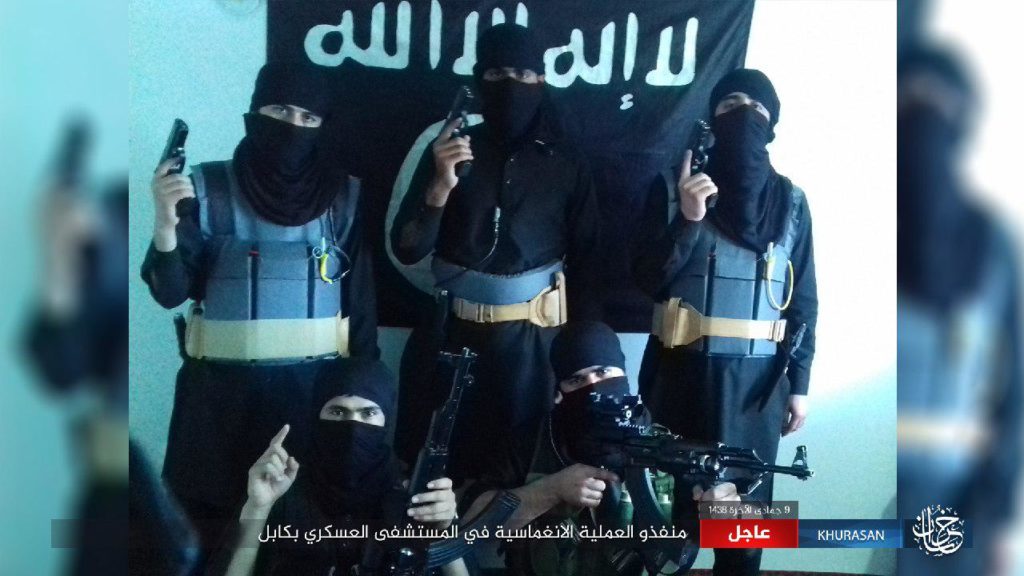
A team of five Islamic State suicide fighters assaulted a military hospital in the Afghan capital yesterday. The number of reported casualties has steadily climbed, with dozens killed and many more wounded.
The United Nations mission issued a statement condemning the attack. The UN explained that the Sardar Mohammad Daud Khan Hospital in Kabul is “the largest military medical facility in Afghanistan” and “treats sick and wounded members of the armed forces and their family members.”
“This egregious and morally reprehensible attack targeted people at their most vulnerable, while they were receiving treatment in the hospital, and also targeted the medical staff caring for them,” Pernille Kardel, the acting head of the UN Assistance Mission in Afghanistan (UNAMA), was quoted as saying in the UN’s press release. Kardel added that the massacre “amounts to an atrocity, and the perpetrators must be held accountable.”
The Islamic State’s Amaq News Agency quickly claimed responsibility, posting pictures of the terrorists responsible and also a statement. Separately, the so-called caliphate’s Khorasan province released an image of the jihadis. The photo can be seen above.
The operation began when a suicide bomber drove a vehicle-borne improvised explosive device (VBIED) into an entrance in the rear of the hospital. Four others, wearing explosive vests, then rushed in. Both Amaq and the UN report that the jihadis were dressed as hospital staff, a move that was undoubtedly intended to sow confusion among the patients, doctors and nurses.
The Islamic State describes its terrorists as inghimasis, who are well-trained guerrilla fighters prepared to die in battle. They are different from traditional suicide bombers in that they don’t detonate their explosive belts at the outset of the fight, but instead first battle their enemies with light arms or other weapons. They “immerse” themselves in the battle before killing themselves.
This is how the raid was conducted in Kabul, as the Islamic State’s inghimasis reportedly engaged in a lengthy firefight, using AK-47s and grenades, before Afghan security forces finally pinned them down. Only then did they detonate their suicide vests.
As FDD’s Long War Journal has reported in the past, both the Islamic State and al Qaeda use inghimasi fighters in their operations.
In January 2016, the Islamic State’s Khorasan province claimed responsibility for an inghimasi assault on the Pakistani consulate in Jalalabad. Seven members of Afghan security forces were reportedly killed. Jalalabad is the capital of Nangarhar province, where the Islamic State’s branch in Afghanistan is based. [See FDD’s Long War Journal, Islamic State ‘province’ claims attack on Pakistani consulate in Jalalabad.]
Al Qaeda uses inghimasis as well. A team of al Qaeda suicide terrorists were used in the battle for Aleppo last year. Another group of inghimasis raided the Syrian regime’s military intelligence buildings in Homs earlier this month. The jihadists killed Bashar al Assad’s intelligence chief in Homs after fighting through security and infiltrating his office building. [See FDD’s Long War Journal report, Syrian military intelligence official killed in suicide assault in Homs.]
Amaq News claims that upwards of 400 people were killed or wounded at the military hospital in Kabul. This is likely an exaggeration. Still, according to the UN, the “number of civilian casualties is reportedly high.”








4 Comments
Very sad to read this. When I was there is 2009-10 doing counter-narcotics work out of Herat for the UN, my team leader and I used to go there to get our VA meds refilled. Always had a great experience there, and we were always treated with respect and dignity as combat veterans. It seems, to me, that there was no excuse for this event to have occurred. I have to wonder if there was some “inside” involvement.
It must be that the ISIS fighters do not trust their God. The reason that I say that is that every time they attack they cover their face so that they cannot be identified. I guess that I cannot blame them though because they only succeed at first and start failing later. It must be that their God is not happy with what they are doing.
Where were the UN when coalition air force bombed hospitals in Damascus, Mosul, Tripoli, Raqqa. Hypcrites!
Respect.